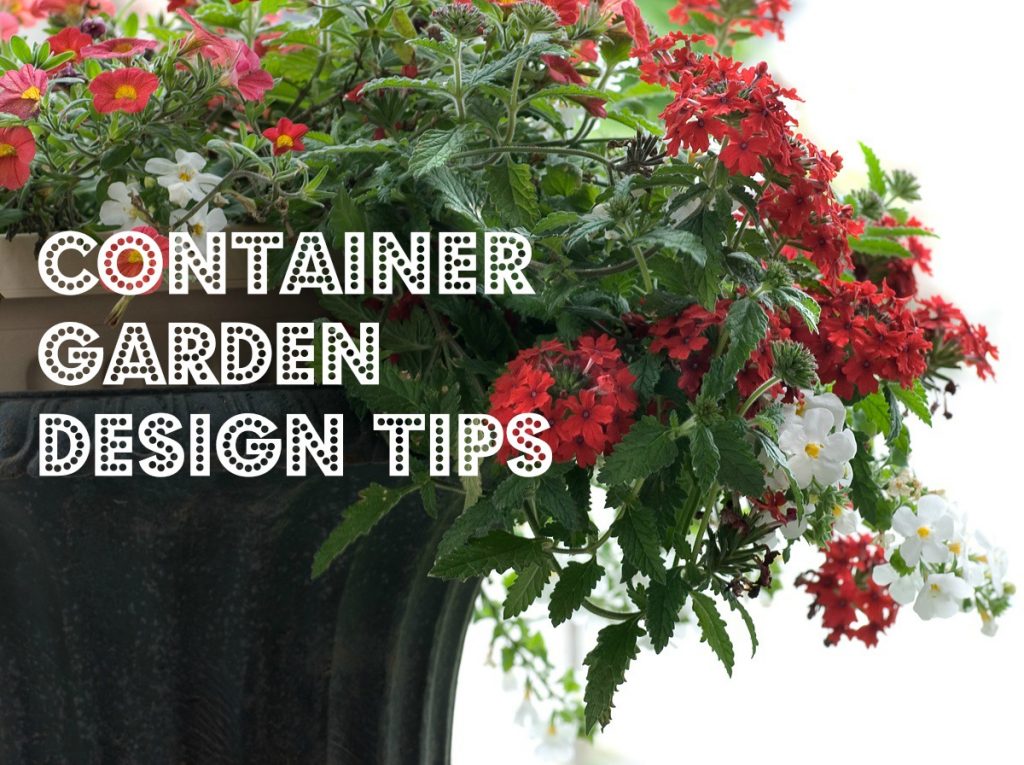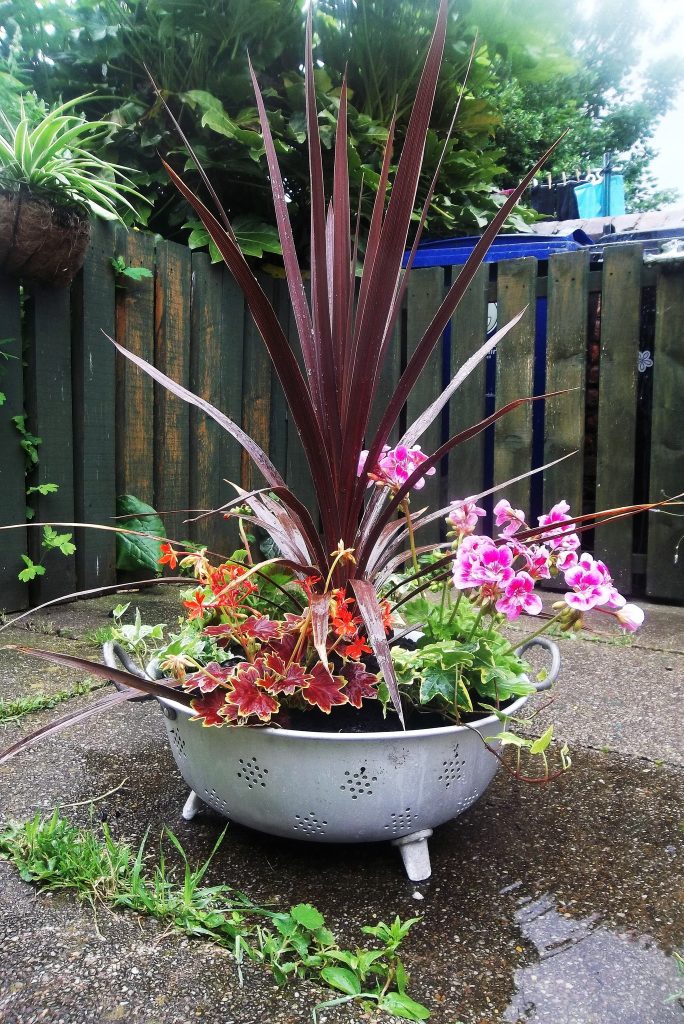These secrets to beautiful container garden designs will help you create professional-looking planters and containers using simple elements from your local garden center. No art degree required!

Photo licensed from (C) Gracey Stinson via Morguefile.com
Container Garden Designs: 10 Tips
When I worked in the nursery and garden center business, the lady who designed container gardens for our customers was a trained visual artist. There’s a good reason for this: container garden design is really an art form. The best containers follow and aesthetic rule called the rule of thirds in which the entire composition is divided into thirds.
If you follow this rule of thirds for your container garden, and follow it throughout the design, you will have a beautiful container. Here are 10 tips for beautiful container gardens.
- Choose a large enough container: Don’t skimp on the volume of the container. The container must be large enough to hold plenty of soil as well as the plants. If the container is too shallow for your plants, the roots won’t have room to grow, and the plants will be stunted.
- Place large containers where you want them to end up before you fill them with soil. They are heavy!
- Use packing peanuts at the bottom of the container for added drainage without the weight.
- Make sure your containers have plenty of drainage holes. Water should flow freely from the container, not turn it into a mud puddle!
- Choose plants appropriate to the light requirements and for a container garden. Annuals make great container garden plants. Perennials should be moved to the garden or kept in the garden for best growth.
- Make sure that the plants you choose will attain the final heights that you want them to. Look at the labels on the containers. Just because a plant is small now doesn’t mean it will stay small during the season!
- Keep your container well-watered during the growing season, especially during the summer. Container gardens dry out more quickly than gardens in the ground and may need more frequent drinks of water.
- Use the rule of thirds for the plants added: add a thriller, a filler and a spiller. A thriller soars up and offers a focal point. Think dracena grass, a shrub, or a tall, attractive flowers. A filler takes up room in the midpoint inside the container. Think mid-size flowers like impatiens, marigolds, begonia. A spiller literally flows or spills over the edge of the container, making a graceful transition to the container itself. Ivy or petunias make great spillers.
- Green is a neutral color in gardening, like black and white are neutrals when you’re choosing clothing that goes together. Any other color goes with green. You can use green as a background color or to offset very bright colors like yellows, hot pink, etc.
- Remember that light colors attract the eye while dark colors make the item recede. White, yellow and bright pink will all make the plant and container stand out while dark purples and other dark colors make the flowers recede into the background.
Beautiful container garden designs start with the right materials. You can use any type of planter or container as long as it’s large enough. The container below shows a clever use of an old colander. Even though it uses “found” objects, it still adheres to the rule of three:

License: CC BY 2.0 | SteveP2008 Flickr Creative Commons
I hope you enjoyed my tips for container garden design. Happy gardening. Keep GROWING!





